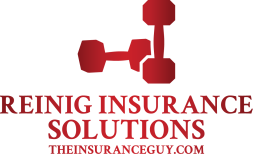Every year, our company conducts an in-house analysis of the types of liability insurance claims we have experienced from the prior year. We categorize various incidents by cause of injury and calculate the estimated or actual monetary value of the claim. As you can imagine there are several “types” of liability claims that can occur at a health club; child care injuries, slip and fall incidents, equipment failure, tanning burns, and improper instruction to name a few. However, the most common cause of injury that occurs in a health club can be attributed to what we call “member malfunction”.
Some examples of member malfunction are: 1) member blows out his knee doing a squat on a Smith machine 2) member rolls off of a Fit-Ball and injures her wrist 3) member strains their back muscle doing dead lifts 4) member smashes their fingers replacing dumbbells in a weight rack 5) member passes out in a sauna and cracks their head and the most common 6) member loses their balance and falls off a treadmill. These are the type of claims that you may look and say, “How are any of these injuries the fault of the club?” Unfortunately, although these types of accidents happen all the time at your gym, there is a certain segment of society, who never learned the term “accountability” when they were growing up. They have taken the position that they are hurt (or not) and that someone else must be responsible. It amazes me that these individuals are able to find attorneys who will take up their cause and sue the clubs for these wanton negligent events. Since attorneys are rarely held to their own standard of avoiding frivolous lawsuits by judges who let them get away it, we are all paying the price of this type of litigation through increased insurance premiums.
As you can probably sense through the tone of my writing, I am not a big fan of the Trial Lawyers Association. These type of claims not only cost everyone a considerable amount of time and money, but they ultimately ruin the reputation of us as insurance representatives. We hold ourselves out as protectors of our clients’ businesses yet the companies we represent strike deals with plaintiff attorneys when there is no negligence on the part of the club. The insurance industry refers to this litigious extortion as the “economic value” of a claim. The insurance agent is then put in a position to tell the club owner that their claims experience is poor when they have done nothing wrong. It truly is a no-win situation for everyone, except of course, the attorneys.
So, what do we do to help reduce or eliminate member malfunction claims? After all, accidents will happen and members will do crazy things. It is hard to create a risk management protocol to manage member stupidity. However, there are some steps that can be taken to tip the scales in our favor.
- Learn your member’s name. I can’t stress this enough. I have written about this in the past and I will continue to pound home the idea that friends do not sue friends. If you take a genuine interest in the welfare of your member by proactively helping them with their fitness goals and knowing a little bit about them (ie; their name and what they do for a living) you will create a bond that is not only good for business, but will help “suit-proof” your club if and when they do injure themselves.
- Have written Club Policies and Guidelines: Most plaintiff attorneys will attack a club under the accusations of improper orientation and/or supervision. If you have written policies that, among other things, clearly state; “If you are unfamiliar with the use of ANY equipment, please see a staff member for assistance.” Your policies and guidelines should help create your club workout atmosphere. Items such as; please rack your weights, use a workout towel, wipe equipment after each use, allow others to work in, and report any equipment malfunction immediately to management, also, go a long way to improving customer service and reducing your exposure. It also provides you with a platform for removing a member when they do something stupid; the old three strikes and your out rule.
- Follow up with your member when they are injured even if it is their fault. A courtesy call from the club owner to the member’s home to check up on them should be common practice. It will demonstrate your concern and also provide you with an immediate version of what happened in the eyes of the injured party. Document all conversations in addition to completing an incident report.
- Report the incident immediately to your insurance company. One of the biggest mistakes a club owner or manager can make is to not document the incident on the day it occurs. Even if a member tells you that they are “O.K.”, it is vitally important to fill out an incident report and obtain witness reports. If you have digital video surveillance, download the incident to a disc and store it in a secure location. Plaintiff attorneys will assume that club owners do a poor job of documentation and they will test your ability to maintain these reports when they send you a lawsuit two years after the date of injury.

